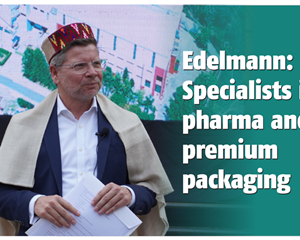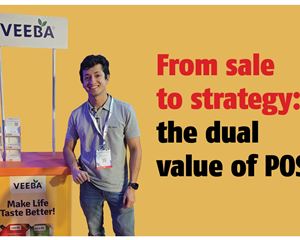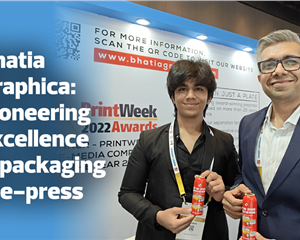Micro-Huber promotes ‘safety first’ with Gecko launch
Micro Inks-Huber Group launched the Gecko line of flexible packaging inks in India at twin events held in Mumbai and Noida on 20 and 21 March 2015 respectively, in the presence of Huber top brass from Germany and Italy, and the local printing community and print buyers.
23 Mar 2015 | By PrintWeek India
Following the launch, Micro Huber will start production of the Gecko series of inks at the expanded facility in its Vapi plant.
Aimed especially at the food packaging segment, the series of inks under the brand name Gecko (which is a species of lizard, hence the brand logo of a colourful lizard) are free from hazardous and toxic chemicals like toluene and ketone. Gecko inks are already well established in Europe, and with this launch from India, Gecko will be made available globally.
“In India, whenever one discusses the safety aspect of printing inks or packaging inks, it revolves around the ink being either toluene-free or containing toluene. Food safety in ink is beyond talks about toluene. We are just not talking about ink, which does not contain toluene, but an ink system which meets very stringent expectations of today’s safe food packaging,” said Ashwani Bhardwaj, managing director at Micro Inks.
Promoting the idea of ‘safety first’, Bhardwaj said, these new generation food packaging inks for flexo and gravure have been manufactured following the regulatory compliance prevalent in Europe, including the Swiss Ordinance, EuPIA guidelines and Nestle guidelines, among others. He added that the inks are the result of the company’s good manufacturing practices (GMP), which starts from the selection of the right raw material.
“An extensive technical work has gone into this new ink, which ensures that the raw material that go into the Gecko product full meets the migration norms as defined by the regulatory framework,” said Bhardwaj.
In India, the ink comes at a time when the packaging industry, including food packaging, is on a growth path, and at the same time, there has been rising awareness about food safety in packaging. At the heart of this is the consumer interest.
Bhardwaj, said, “From the feedback we have received, the Indian print industry is very keenly and eagerly looking forward for proactive action from all the players, be it the ink manufacturers, substrates or press solutions. The Gecko system is designed to largely fulfil the expectation that our customers would have as far as printing inks are concerned.”
When it comes to food packaging, whether it is primary or secondary packaging, there are certain issues that a converter and a print buyer must consider. The first is the toxicity factor of the package and second, the issues of migration, meaning, the printed ink should not change the ‘organoleptic’ behaviour of the food, meaning, the ink should not affect the taste and the molecular properties of the food inside the package. “The Gecko inks prevent this migration not just at the level of surface printing but also at the level of lamination, making the foodstuff inside the package perfectly safe for consumption,” said Bhardwaj.
This safety aspect begins at the level of raw material selection itself, which stringently follows both the regulatory guidelines and GMP guidelines.
“Quite differently to the R&D projects for product for the publication sector, the Huber Group’s packaging-oriented R&D work has developed far beyond printability targets. In addition to various requirements of print performance, adhesion, cohesion and fastness, the focus has been targeted mainly to the safety needs finally necessary to protect the foodstuff inside the packaging, and last, but not the least, against migration of particles from ink layers onto the actual food,” said Ursula Borgmann, group CEO and chief technology officer, Huber Group. “This focus has enabled the Huber Group to introduce ‘low migration inks’ for offset, flexo and gravure printing.”
This year marks Huber Group’s 250 years of existence, 25 years of Micro Ink and 10 years of Micro-Huber partnership.
This news was published on 23 March, 2015.














 See All
See All